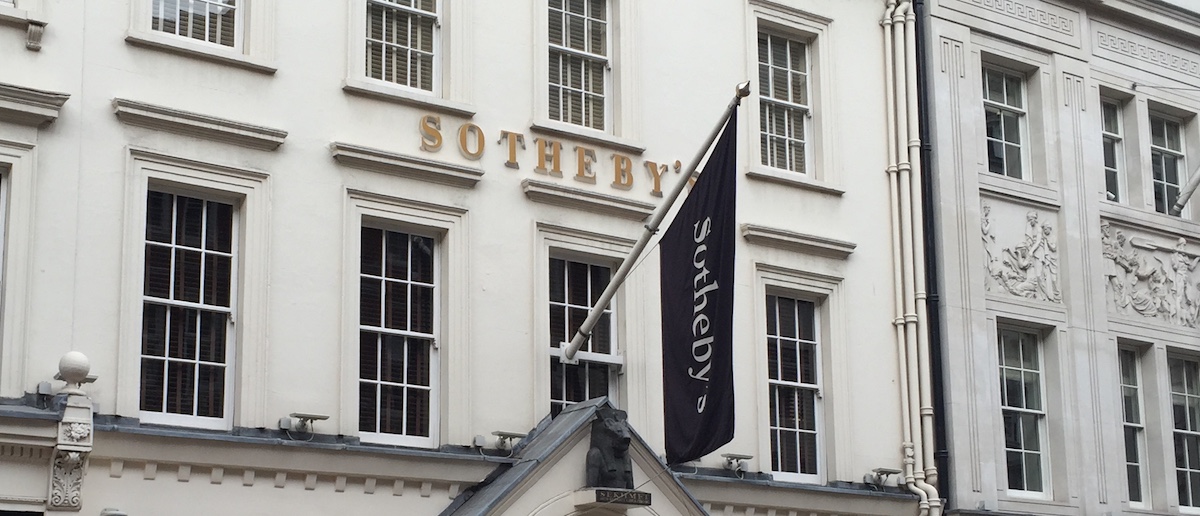In my best Sam the Eagle voice: “Sales is vanity, profit is sanity”. Splashed all over the art newspapers this week were the impressive sales figures of Christie’s Surrealism auction, where lots sold for a combined total of £147m, (Write it in full: £147,031,000.00 – oooh look how titillatingly long that is!), with Miró’s ‘Women, Moon, Birds’ topping the bill at £15.5m. (Oh go on then: £15,538,500.00. Oooohhhh.) Yet for all the headline grabbing, the top auction houses are very close to writing checks their proverbial asses can’t cash: with combining factors of taxation, fees and guarantees, the margins for profit at this end of the auction spectrum are in actuality very narrow (it has even been speculated that Giacometti’s ‘Chariot’ priced at $101m was eventually sold at a loss at Sotheby’s in 2014). Yet with Qatari Royal families increasingly willing to stump up the dirty sexy money – making Gauguin’s ‘Nadea Faa Ipoipo’ of 1892 the most expensive work of art at £300m – these houses want to prove they’re still playing with the big boys.
It’s essentially a very expensive PR exercise, maintaining the two rival houses at the top of the auctioneering tree. Behind the Giacometti campaign was a ton of glossy marketing. It’s not unheard of to wine and dine potential buyers at mass expense, going for a soft, persuasive sell. At this level the use of guarantees – baseline payments to consignors whether their lot sells or not – makes it extremely risky. When the ‘Chariot’ failed to raise bids at the starting price of $80m, the auctioneer relied on ‘chandelier bids’ i.e. artificially raising the price without actual bids, as a theatrical means to get things going. It is the regular every day stuff that spins the bread and butter money as lots such as Mrs Miggins’s fine bone china don’t use guarantees: it’s no win, no fee. If it doesn’t sell, the house doesn’t have to stump up a large proportion of its worth anyway.
Yet these lots do not serve to aggrandise the prestigious, historic and worldwide institutions. Philip Hook of Sotheby’s wrote of his experience selling Munch’s ‘The Scream’: “the announcement created a world-wide media sensation, bigger than that generated by any other single object in Sotheby’s history”. How on earth can you value something when all other known versions are in museums, and no precedent is available? The thought process essentially plucked a figure out of the air, and he candidly admits that on the night they had no idea if it would actually sell, with enormous risk for Sotheby’s reputation: “What if it doesn’t sell? It would be a disaster. Failing to get it to its reserve and the consequent negative publicity would be a sacking offence”. In the end it seems almost a fluke that it sold for $119.9m.
Damien Hirst, the businessman masquerading as an artist, exercised canny tactics in this respect. Part of the point of making a skull encrusted with diamonds was the asking price of £50m lovingly slapped on it. When it didn’t sell, the anonymous consortium which eventually bought it included Hirst himself, in a PR management move as calculating as the methods used by banks in moving their cash around simply to collect fees and interest. No wonder he’s churning out tacky shite for Valentine’s Day: it’s an easy way to cash in. If anyone bought me a Hirst for Valentine’s I’d begin to wonder what on earth I did to piss them off so much. I’d at least want a dismembered calf, then I could make myself lunch.
In this light, it is welcomingly refreshing that in the bitter wake of Picasso’s will and testament between bickering inheritors, his granddaughter is set to sell off some 10,000 of his works, bypassing auction houses completely, with the proceeds funding her charity work. Not only is it denying the houses some lifeblood, but it highlights a changing landscape for selling (Fine Art from Amazon, anyone? OOOPS it already exists!!!) in which those crowned kings of auctioning find their sovereignty is becoming increasingly symbolic.
bytch@artlyst.com

